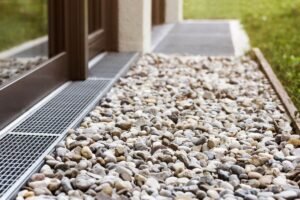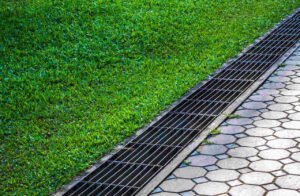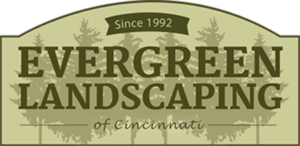Standing water in your yard, soggy patches near the foundation, or a perpetually damp lawn can all point to one problem: poor drainage. While most homeowners think of drainage as a job for gutters or grading, hardscaping services offer innovative and lasting solutions. From strategically placed pavers to retaining walls with integrated drainage systems, hardscaping can be both beautiful and functional. In this blog, we’ll explore how hardscaping not only enhances curb appeal but also plays a key role in directing and managing water flow on your property. If you’ve ever wondered whether hardscaping can fix those water issues, the answer might just surprise you.
Understanding the Basics of Drainage Issues
Before diving into solutions, it’s important to understand the problem. Poor drainage isn’t always dramatic. Sometimes it’s standing water after heavy rain, and other times it’s subtle, such as cracks in your foundation, mold in your basement, or even dead patches of grass. These are signs of water pooling where it shouldn’t.
Improper drainage can result from compacted soil, lack of slope, poor grading, or aging infrastructure. Over time, water that doesn’t drain away can weaken the structural integrity of your home, damage landscaping, and create safety hazards. Fortunately, hardscaping provides a reliable way to reroute and manage water naturally and effectively.
How Hardscaping Works in Drainage Management?
Hardscaping refers to the non-living, structural elements of your outdoor space—think patios, walkways, retaining walls, paver systems, and gravel paths. When designed thoughtfully, these features can guide water away from your foundation and prevent erosion.
For example, permeable pavers allow rainwater to seep into the ground rather than pooling on the surface. Retaining walls can be built with drainage pipes to channel water downhill or into dry wells. Even simple features like stone paths or border edging can be graded to direct runoff. This approach not only looks great but also protects your home’s foundation and lawn health long-term.
Permeable Pavers: A Stylish and Functional Solution
Permeable pavers are becoming increasingly popular in residential and commercial landscaping for good reason. Unlike traditional concrete slabs, permeable pavers are designed with small gaps or porous materials that allow rainwater to flow through and into the soil below.
This natural absorption reduces surface runoff, minimizing the chances of puddles or erosion. It also helps replenish groundwater, making it an eco-friendly solution. Homeowners love that these pavers come in a variety of styles—from rustic cobblestone looks to sleek modern finishes—so they don’t have to sacrifice style for function. Whether it’s for a driveway, patio, or pathway, permeable hardscaping can solve drainage issues with flair.
Retaining Walls With Integrated Drainage
If your property has a slope or uneven terrain, retaining walls can do more than hold back soil—they can control how water moves through your yard. Built with weep holes, gravel backfill, or internal drainage pipes, retaining walls channel excess water away from areas where it could pool or cause damage.
Hardscaping professionals often design retaining walls with built-in drainage systems to prevent water pressure from building up behind the wall. This not only extends the lifespan of the structure but also helps protect nearby foundations and outdoor spaces. Done right, a retaining wall becomes a stylish, multi-functional addition to your yard.
Dry Creek Beds: A Natural Drainage Feature
Sometimes, hardscaping mimics nature, and dry creek beds are a perfect example. These features involve digging a shallow trench and filling it with decorative rocks to guide stormwater runoff across the property in a controlled and attractive way.
Dry creek beds are a great alternative in areas where you want drainage but don’t want pipes or metal grates interrupting your landscape’s beauty. They blend seamlessly into the surrounding environment and often include plants, boulders, and mulch to boost visual interest. They’re low-maintenance and extremely effective in controlling seasonal water flow without flooding your yard.
Grading and Sloping: The Invisible Hardscape Hero
One of the first steps in hardscape design for drainage is grading the land properly. Grading involves leveling or angling the ground so that water flows away from your home, rather than pooling around it. Although grading might not be visible like pavers or retaining walls, it’s arguably one of the most critical elements in managing water.
Professional hardscaping services use precise equipment and calculations to ensure water drains effectively. They often incorporate French drains, gravel layers, or channel drains into the slope design. Proper grading prevents water accumulation and keeps foundations, walkways, and plant beds safe and dry over time.
Combining Aesthetics With Function
One of the biggest advantages of using hardscaping for drainage is that it blends form with function. Instead of installing plain drainage pipes or trenches that disrupt the look of your lawn, hardscape features like stone patios, garden borders, or tiered retaining walls manage water while enhancing your property’s design.
Homeowners often don’t realize they can solve their drainage problems with beautiful landscape features. That puddle-prone area of your yard might be the perfect place for a raised stone planter or decorative flagstone pathway that doubles as a water diversion system. The key is working with a professional who understands both the science and art of hardscape design.
Long-Term Benefits and ROI of Hardscaping for Drainage
Investing in hardscaping for drainage isn’t just about solving today’s water problem—it’s about protecting your home for years to come. Properly installed hardscape features can:
- Prevent costly foundation repairs
- Reduce lawn erosion
- Eliminate mold or mildew risks.
- Improve overall yard usability.
- Boost curb appeal and resale value.
Many homeowners who install these features experience fewer landscaping issues, enjoy more usable outdoor space, and report higher satisfaction with their property overall. Plus, hardscaping typically requires less maintenance than softscaping and stands up well to harsh weather, delivering both beauty and protection for the long haul.
Wrap-Up
So, can hardscaping services help with property drainage? Absolutely. From permeable pavers and strategically placed retaining walls to subtle grading and decorative dry creek beds, hardscaping offers practical and attractive solutions for common water issues. Whether you’re dealing with persistent puddles or protecting your home’s foundation, hardscape features can redirect water where it belongs—away from your home. The bonus? These structures also beautify your outdoor space and increase your property’s value. Don’t wait for water to cause costly damage. Invest in thoughtful, well-planned hardscaping to safeguard your property and make your yard both functional and stunning.
FAQs
- Can hardscaping eliminate my drainage issues?
Hardscaping can significantly improve water flow and prevent pooling, but its success depends on proper design and professional installation tailored to your property. - Are hardscaping drainage solutions expensive?
Costs vary by project size and materials, but the investment often pays off by preventing foundation damage and reducing future landscaping repairs. - Do I need a permit to add hardscaping for drainage?
Some cities require permits for certain hardscape structures, especially retaining walls or major grading work. Always check local building codes. - How do I know which drainage solution is best for my yard?
A professional hardscape contractor can assess your property’s slope, soil, and water flow to recommend a customized plan that addresses your specific drainage needs.
